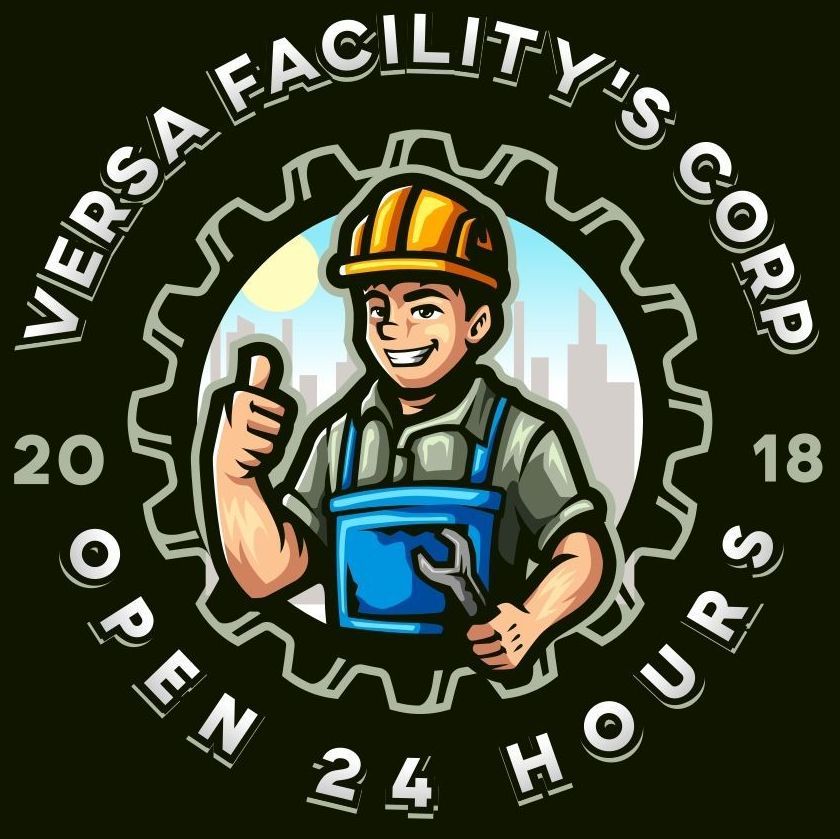How to Build the Perfect Facility Cleaning Schedule for Your Business
A clean facility isn’t just about appearances—it’s about safety, compliance, productivity, and protecting your brand reputation. Whether you operate an office, restaurant, or retail store in Texas, having a structured facility cleaning schedule ensures that every corner of your property remains sanitary and welcoming for both employees and customers.
In this guide, we’ll walk you through the step-by-step process of creating the perfect cleaning plan for your business. You’ll also find practical examples for different industries and learn how professional contractors use janitorial best practices to keep facilities in compliance with industry standards.
Why a Facility Cleaning Schedule Matters
Without a consistent routine, cleaning quickly becomes a reactive rather than a proactive process. Small messes can escalate into bigger problems, health hazards can go unnoticed, and the appearance of neglect can erode customer trust. By building a facility cleaning schedule, you:
- Maintain your building's compliance with health and safety standards.
- Prevent the buildup of dirt, germs, and allergens.
- Reduce long-term maintenance costs.
- Improve workplace morale and productivity.
- Present a professional image to clients and visitors.
A structured plan also creates accountability. Everyone knows what needs to be done and when, preventing tasks from being forgotten.
Step 1: Assess Your Facility’s Needs
Every building is unique, which means your schedule should be tailored to your environment. Start with a full walkthrough to identify:
- High-traffic areas (lobbies, bathrooms, breakrooms, dining spaces).
- Sensitive areas (kitchens, medical spaces, food storage zones).
- Seasonal challenges (mud tracked in during rainy months, pollen during spring, etc.).
Document these observations in a checklist. This will serve as the foundation for your cleaning plan.
Step 2: Define Cleaning Frequencies
A good facility cleaning schedule breaks tasks down by frequency of performance. Here’s a simple framework:
Daily Tasks
- Empty trash bins and replace liners.
- Sanitize restrooms, sinks, and counters.
- Sweep and mop hard floors.
- Wipe down high-touch surfaces (door handles, light switches, elevator buttons).
Weekly Tasks
- Deep-clean carpets with vacuums or spot treatments.
- Dust vents, blinds, and light fixtures.
- Sanitize breakroom appliances.
- Polish glass doors and windows.
Monthly or Seasonal Tasks
- Strip and wax floors.
- Pressure wash exterior walkways.
- Clean behind large appliances.
- Conduct deep sanitation of bathrooms and kitchens.
Breaking tasks into manageable frequencies ensures that nothing gets overlooked.
Step 3: Assign Responsibility
Who handles each task? Smaller businesses may rely on in-house staff, while larger facilities benefit from outsourcing to professional providers. Partnering with an experienced team ensures:
- Work is completed to industry standards.
- Specialized equipment (like floor buffers and HEPA vacuums) is available.
- Compliance with regulations is maintained.
This is where janitorial best practices come into play—trained professionals know how to tackle different surfaces, use cleaning chemicals safely, and document completed work.
Step 4: Align with Building Cleaning Compliance
Every industry has regulations that dictate cleaning requirements. For example:
- Restaurants must comply with health department inspections and food safety standards.
- Healthcare facilities must meet strict infection-control protocols.
- Offices may need to follow OSHA guidelines for maintaining a clean workplace.
A structured facility cleaning schedule ensures ongoing compliance with building cleaning requirements, so you’re never caught off guard during inspections. Keeping detailed cleaning logs can also help you demonstrate compliance when regulators visit.
Step 5: Monitor and Adjust the Plan
No schedule is perfect forever. Over time, foot traffic may increase, seasonal issues may arise, or new compliance requirements may come into effect. Conduct quarterly reviews to adjust cleaning frequency or expand service areas as needed.
You can also use employee and customer feedback to identify areas for improvement. For instance, if staff often complain about dirty breakrooms midweek, you may need to add an extra cleaning session.
Example Schedules for Different Businesses
Offices
- Daily: Empty trash, sanitize restrooms, clean desks and communal areas, vacuum carpets.
- Weekly: Deep-clean conference rooms, disinfect breakrooms, polish lobby floors.
- Monthly: Wash windows, clean vents, and sanitize upholstery.
Restaurants
- Daily: Sanitize all kitchen surfaces, clean floors, empty grease traps, and scrub bathrooms.
- Weekly: Wash hood vents, power wash kitchen mats, and detail clean walk-in coolers.
- Monthly: Professional deep cleaning of kitchens, pressure washing exterior patios, and servicing HVAC filters.
Retail Stores
- Daily: Clean fitting rooms, sanitize checkout counters, mop and sweep floors, restock restrooms.
- Weekly: Dust shelves and displays, polish entrance glass, sanitize stockroom.
- Monthly: Deep-clean carpets, strip and wax floors, pressure wash sidewalks.
These examples highlight how customization is key—no two facilities have the exact same cleaning demands.
Step 6: Build Accountability Systems
Even the best plan fails without accountability. Here are tools to keep your schedule on track:
- Checklists: Daily or weekly task lists for staff to sign off on.
- Time Tracking: Log how long tasks take to identify areas for improvement and efficiency gaps.
- Digital Platforms: Many professional services offer apps for scheduling, reporting, and tracking compliance.
These systems ensure transparency and keep both staff and contractors accountable.

The Role of Professional Services
While in-house teams can manage basic tidying, many businesses turn to professional providers for specialized cleaning. Outsourcing has key benefits:
- Access to commercial-grade tools and products.
- Staff trained in janitorial best practices and compliance protocols.
- Documentation for audits, inspections, and insurance.
- Peace of mind knowing your facility is maintained consistently.
Cost Considerations
Budgeting for a cleaning schedule can be daunting, but consider it an investment in your home's well-being. Proactive cleaning reduces repair costs (such as replacing worn carpets or refinishing floors), prevents pest infestations, and even lowers sick days by reducing the spread of germs.
For smaller businesses, outsourcing can also be more cost-effective than hiring in-house staff—especially since you only pay for the services you need.
Create a Cleaning Schedule That Works for Your Business
Building the perfect facility cleaning schedule requires thoughtful planning, clear responsibilities, and ongoing review. By breaking tasks into daily, weekly, and monthly intervals, you’ll keep your property safe, welcoming, and compliant with industry standards.
From office buildings to restaurants and retail stores, every business benefits from a structured plan supported by professional expertise. To ensure your property meets the highest standards of cleanliness and building cleaning compliance, consider partnering with a team that specializes in customized solutions.
At Versa Facility’s Corp, we design cleaning programs that fit your exact needs—so you can focus on running your business while we keep your environment spotless. Contact us today to discover how we can develop a customized plan tailored to your facility.
